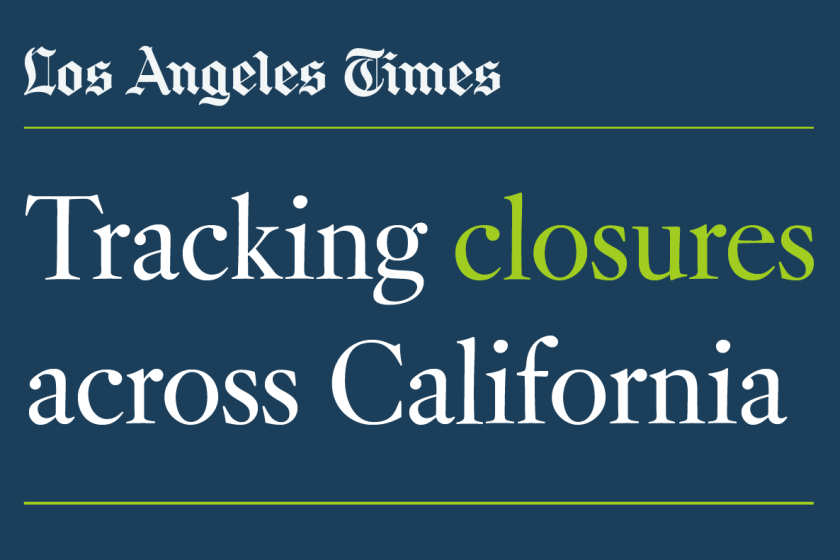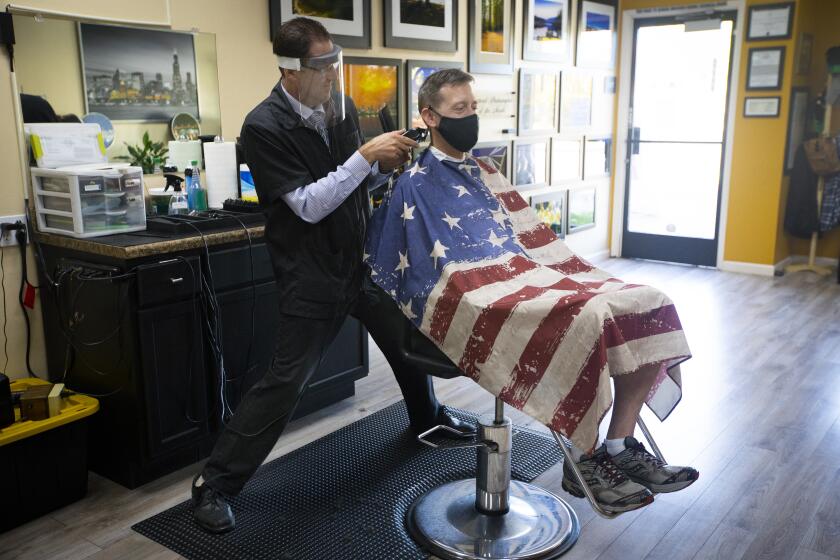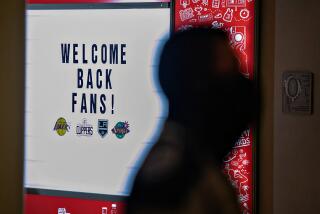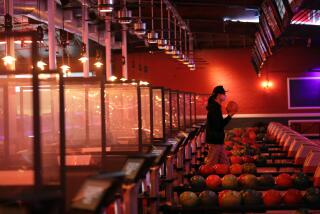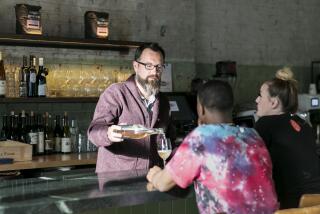California is rapidly speeding up the reopening of the economy. Here’s what it means
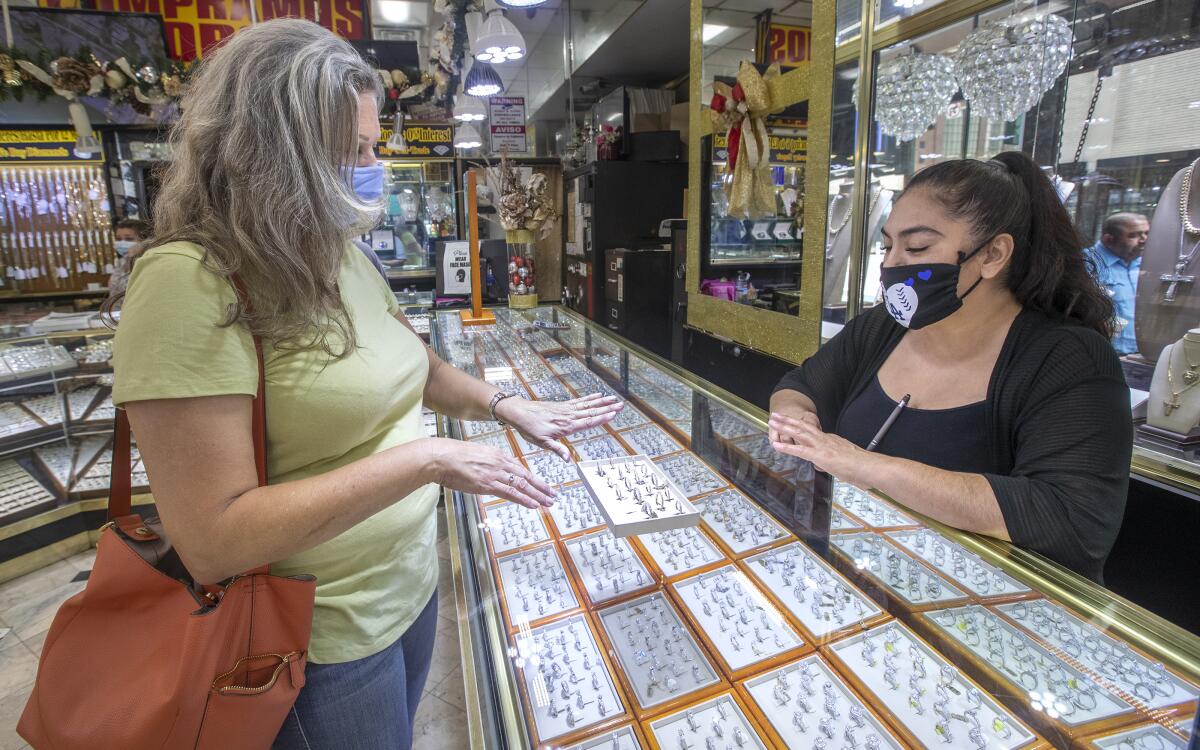
- Share via
SACRAMENTO — Gov. Gavin Newsom has eased some of California’s requirements for reopening businesses.
The rules will make it easier for counties to restart the economy, but it still likely means that regions hit hardest by the coronavirus will open more slowly.
Why the change?
Newsom pointed to progress, including a stable hospitalization rate among COVID-19 patients and those treated in intensive care units, as well as increased testing and more protective gear for healthcare workers.
California also has faced intense pressure from some counties with relatively few cases to reopen more quickly.
To contain the spread of COVID-19, parks, restaurants and stores are slowly reopening.
What has changed?
Counties no longer will be kept from loosening the shutdown rules if they have recorded COVID-19 deaths in the previous two weeks. The original standard was criticized in many of California’s urban counties, whose leaders argued that even a single fatal case would block them from moving deeper into the second stage of reopening rules crafted by the Newsom administration.
The new standard removes the death rate requirement and replaces it with a more generous threshold based on rates of newly confirmed cases. Counties will be able to move toward a more expansive reopening if they can show fewer than 25 coronavirus cases per 100,000 residents in the last 14 days — a standard that was originally one new case per 10,000 residents — or that fewer than 8% of residents tested for the virus over a seven-day period were positive.
Counties also must show that the number of hospitalizations for COVID-19 patients has stabilized, meaning that it can’t increase by more than 5% over a seven-day period, or that a county can’t have more than 20 hospitalizations on any single day over the most recent 14-day period.
If local governments want to open more businesses, the plan allows counties to submit an application declaring that they’ve met the criteria and other requirements on testing, contact tracing and hospital capacity to prepare for a future surge in infections.
Visual look at the third phase to reopen California amid the coronavirus outbreak.
What is the big-picture impact?
It means that 53 of California’s 58 counties can now move further into the second of four stages toward reopening if they file an application with the state, Newsom said. The governor didn’t name the five counties that wouldn’t be able to take immediate advantage of the flexibility, though he cited concerns with skilled nursing facilities in Tulare County and a meatpacking facility in Kings County.
Nor is the announcement expected to bring immediate changes in Los Angeles County, which continues to outpace other parts of the state in confirmed cases and deaths. Local officials say the infection rate in the county is falling, but they remain concerned about the potential spread of the disease.
The new rules will allow restaurant dining rooms and shopping malls to open again in counties that meet the new criteria.
The governor also hinted that even bigger changes envisioned in later stages of reopening are just around the corner, such as the opening of hair salons and even spectator-free sporting events as soon as the first week in June.
The Dodgers, Angels and other California MLB teams could return to their home ballparks for a potential 2020 season, California Gov. Gavin Newsom said Monday.
What else do counties need to do?
The state issued additional rules that will be used to determine whether restrictions can be eased:
Adequate preparedness planning: A significant level of preparedness with testing, contact tracing, personal protective equipment, or PPE, and hospital surge, and planning for long-term care facility disease outbreak prevention and containment. This includes:
- Testing capacity. Minimum daily testing capacity to test 1.5 per 1,000 residents
- Testing availability for at least 75% of residents
- Contact tracing
- At least 15 staff per 100,000 county population trained and available for contact tracing
- Hospital surge
- Hospital capacity to accommodate a minimum surge of 35% of their baseline average daily census
- Skilled nursing facilities disease outbreak prevention and containment
- Plans to prevent and mitigate infections in skilled nursing facilities
- Skilled nursing facilities have more than 14-day supply of PPE on hand for staff, with established process for ongoing procurement.
Response planning: Producing plans related to countywide containment, including testing, contact tracing, vulnerable populations, congregate settings, acute care surge and essential workforce.
The California Department of Public Health will accept second-variance attestations. This allows for approximately 10-14 days, the COVID-19 incubation period, between the introduction of the first variance and the second variance opportunity.
Where do regions of California stand?
Some rural areas have reopened their economies more than others. Los Angeles County is allowing some curbside retail service and has reopened beaches and parks.
San Francisco’s director of public health said Monday he was “cautiously optimistic” that the city will be able to reopen more in the next two to four weeks.
Dr. Grant Colfax, speaking in an online forum, said San Francisco entered Phase 2a of reopening Monday by allowing retailers to open for pickup and delivery. Phase 2b, he said, will involve relaxing restrictions on schools, offices, child care and summer camps.
He indicated that it was likely summer camps would be permitted, but said they will have to abide by health guidelines to prevent new infections.
As long as San Franciscans continue to social distance, practice good hygiene and wear masks, the next phase is just around the corner, he said.
Santa Clara County officials said they decided to allow retailers to open Friday because they saw no uptick in coronavirus cases since permitting construction and outdoor businesses to reopen earlier this month.
“We make one change, watch the indicators, and when we haven’t seen that uptick, then we take the next step and then we watch again,” said Dr. Sara Cody, the county’s health officer.
The new protocol for reopened businesses limits the number of employees to one for every 300 square feet of space. Retailers will have to post signs at their entrances saying they are complying with the new guidelines.
“Everyone who is out in public should always be covering their face” except for young children and people with medical conditions that make wearing masks unsafe, Cody said. “It is an urgent recommendation. It is an expectation. We hope it becomes a new social norm.”
More to Read
Sign up for Essential California
The most important California stories and recommendations in your inbox every morning.
You may occasionally receive promotional content from the Los Angeles Times.
